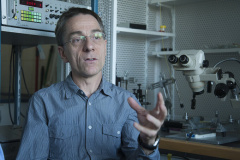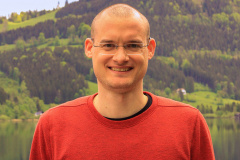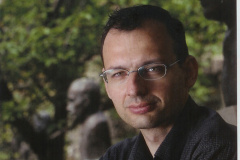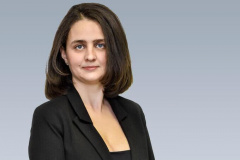Featured Lendület Member: Peter Maga
Automorphic forms are among the most interesting objects of mathematical research today, since they serve as a link between many subfields of mathematics, such as number theory and partial differential equations. Peter Maga, Senior Research Fellow at the HUN-REN Alfréd Rényi Institute of Mathematics, and his Momentum research group will be investigating automorphic forms on higher-rank groups in the coming years.
Automorphic forms are functions that appear in many areas of mathematics. They were originally discovered in number theory, but later they appeared in other areas of mathematics, leading to an increasing number of methods available to study them and more and more questions being asked about them.
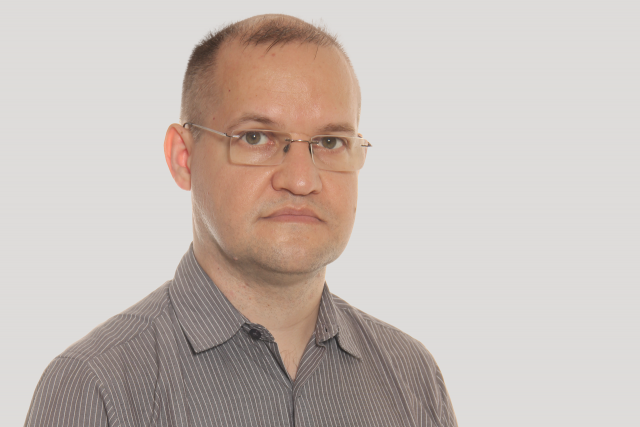 Maga Péter
Maga Péter“The theory of automorphic forms has now become the connection point among several different areas of mathematics,” says Maga. “Examples include complex analysis, algebraic geometry, the theory of partial differential equations, and even graph theory aspects of automorphic forms.”
Old theory with new applications
The automorphic forms studied by the research team are functions interpreted in higher dimensional curved spaces (such as spacetime). These functions are wave functions, that is, solutions of certain partial differential equations (for example, higher dimensional versions of the sine and cosine functions) having arithmetic symmetry.
The study of automorphic forms is of central importance in mathematics
because certain properties of these functions are closely related to many other questions and problems.
Automorphic forms were originally discovered in number theory in the first half of the 19th century with the investigation of the production rate of quadratic forms. One such question is the number of ways a positive integer can be produced as the sum of four square numbers.
The theory is therefore quite old, but it also has quite recent applications. For example, automorphic forms played an important role in solving one of the most famous and long unsolved problems in mathematics, Fermat’s conjecture, which has puzzled mathematicians for more than 300 years and was not solved until 1994. Automorphic forms play a similarly important role in solving the problem of 8- and 24-dimensional sphere packings. This problem is concerned with how space can be filled as densely as possible with spheres of the same size. It is obvious that gap-free filling is not possible, but the question arises as to what the optimal placement of the spheres should be. Using automorphic shapes for 8- and 24- dimensional spaces, a solution to this problem was found a few years ago by Maryna Viazovska, a professor at EPFL in Lausanne, who was awarded the Fields Medal in 2022, one of the most prestigious awards in mathematics, for solving this problem.
Research using the classic pen-and-paper method
“Our research team is also working on these automorphic forms and is investigating a number of questions about them,” says the team leader. “Among these, the supremum norm of automorphic forms is the one that interests us most at the moment. This is looking at
how high the wave crests of automorphic forms can be.”
According to Maga, during the research, the members of the group spend most of their time racking their brains, thinking about the problems requiring solving in almost every situation in life. When they get an idea of how to move forward towards solving the problem, they take out a piece of paper or stand in front of the whiteboard and try to derive and calculate their idea. The research group holds weekly seminars where members get together and think about a problem together, while at the same time keeping an eye on the literature. The research team leader says that at least every two days he goes through the papers uploaded to the arXiv preprint server (which typically have not yet been peer reviewed) and selects those that he thinks might be of interest.
According to the research team leader, computers are relatively rarely used in research on automorphic forms, and research is still carried out using the classical pen-and-paper method. The research plan includes investigating a wide range of problems, and Maga would be most satisfied if they could go far in every project. However, in mathematical research, it is not possible to plan so precisely, as solutions are often born intuitively in the mathematician’s mind, which is often difficult to time. The mathematician is therefore confident that by the end of the Momentum grant period, some of the problems will have been solved, while progress will have been made in the other planned topics.


